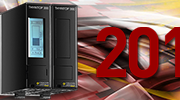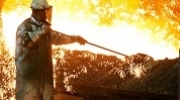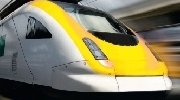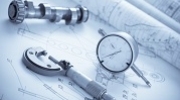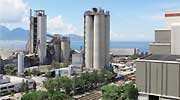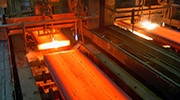The Rear-view Mirror - Statop
The Rear-view Mirror is a new series of articles designed to open up Pyrocontrole's archives. This first issue is dedicated to power controllers: how did we go from the Reguen to the Statop? Today, Statop is constantly updated, with a comprehensive new range giving it an essential role in the accuracy and rapidity of your processes!
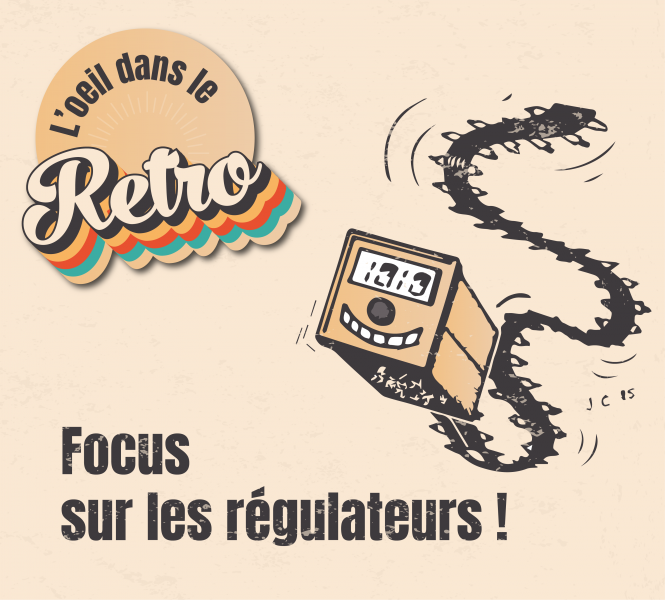
1 // What is a temperature controller?
As its name indicates, a temperature controller is an instrument capable of controlling the temperature. It is usually coupled with a sensor which can measure the temperature of an environment. In this way, it can accurately compare the temperature of a part with the temperature required by the user.
The main goal of a temperature controller is to maintain the temperature required by the operator whatever the external variations.
Lastly, the controllers are linked to a command unit, such as a Statop power controller or a valve.
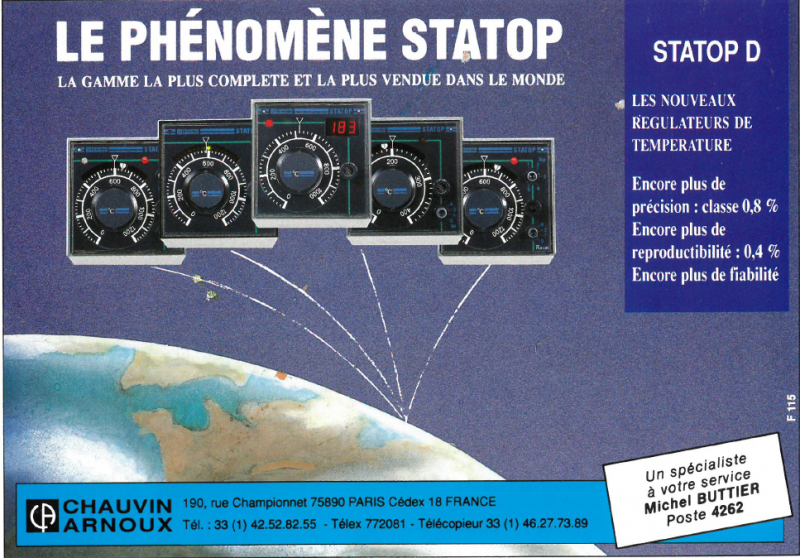
Publicité de 1990
2// From Reguen and Resan to Statop!
The story of temperature controllers at Pyrocontrole goes back a long way! Since the 1930s, Chauvin Arnoux has revolutionized the world of industry by producing and selling thermostats. After Pyrocontrole's takeover by the Chauvin Arnoux Group in 1997, the Statop range was developed on the basis of the initial technology.
Pyrocontrole now proposes a complete range of Statop temperature control units for controlling the temperature of your hydrogen processes, from -200 to 2300°C. The Statop is an essential element for mastering your temperature process. Temperature control helps to improve the accuracy and rapidity of the temperature overall. The control accuracy is less than 0.2% of the total range. The Statop models are equipped with an internal meter which calculates and indicates your energy consumption on the process in question, in kW and/or in euros. They can also be used to create customizable logical sequences to ensure comprehensive, flexible control of the machine.
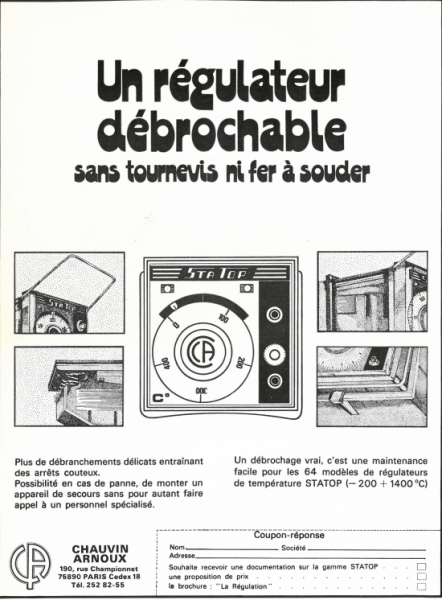
Publicité de 1975

Already, in around 1500 BCE, humans were seeking control systems to quantify time. They came up with the Clepsydra (a water-powered instrument for defining the duration of an event).
In 1746, William Salmon described a ballcock float valve capable of maintaining the water level in domestic water tanks. This principle was further developed in 1765 by the Russian Ivan Polzunov to control the water level in the steam engine with which he equipped the air pumps at the silver mines in Barnaul.
This idea was improved on in 1788, in James Watt's centrifugal governor, intended to maintain the rotation speed of a steam machine at a required value, by modulating the admission of steam by means of centrifugal force (the balls swing out and reduce steam intake). With domestic electric heating, a thermostat commands the heating elements in contact or otherwise or by generating a PWM signal (for a modulating boiler, for example), by reference to the temperature required. Thermostats are often quoted as symbols of such control cybernetics.
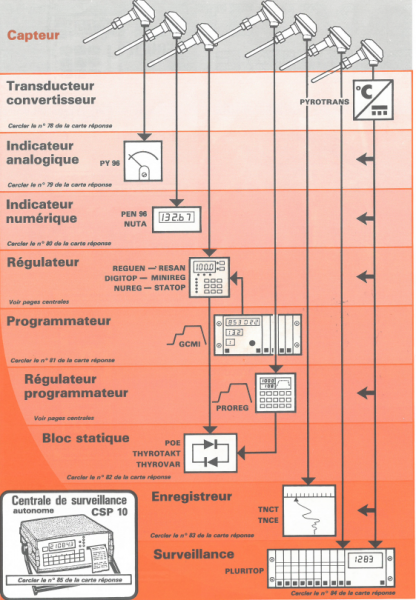
3// Discover our offer STATOP 2023 !









